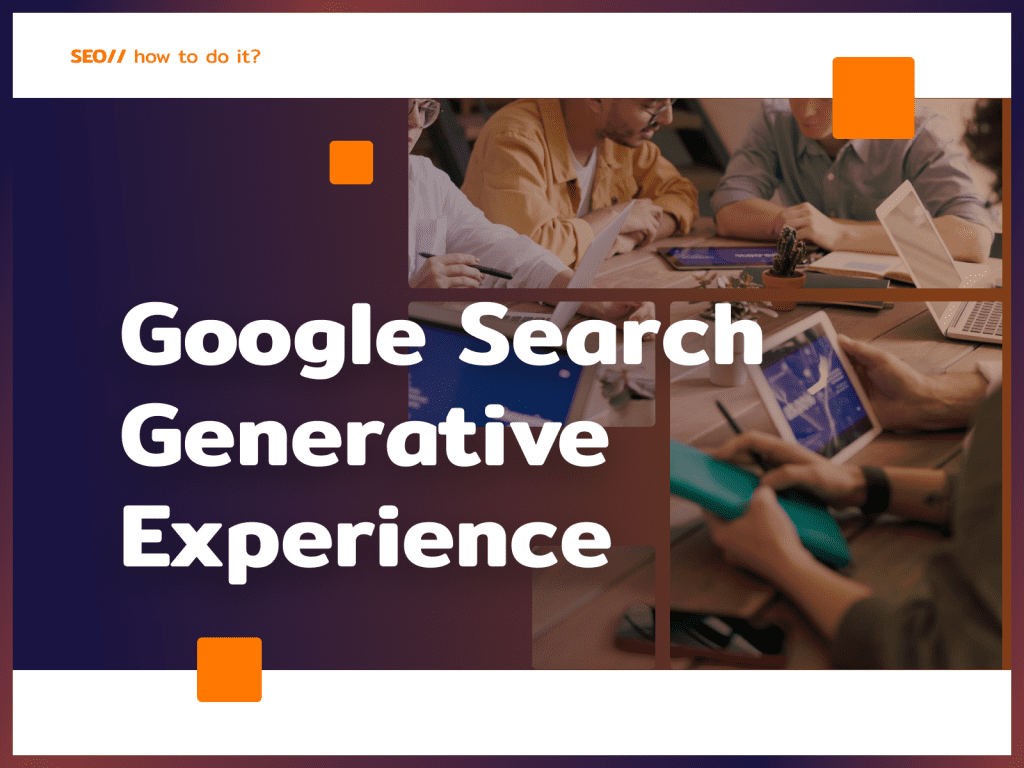With rapid technological development, the user experience of online search is undergoing a revolution. Google is experimenting with artificial intelligence and machine learning. What relevance does this have for us? How do you prepare your site for Google Search Generative Experience? What does this mean for the user?
I am an SEO specialist with 10 years of experience: if you need support with the positioning of your website or online store, contact me.
What is the Google Search Generative Experience? (SGE)
Search Generative Experience (SGE) is the first step in transforming the search experience with generative artificial intelligence. Using SGE, users will notice that their search results page contains familiar web results, organized in a new way to help them get more from a single search. With generative artificial intelligence in the search engine, users are able to ask new types of questions that are more complex and more descriptive, allow them to find exactly the information they are looking for, and start new tasks such as generating images or preparing a sketch.

Chcesz zwiększyć zyski dzięki SEO?
Przygotuję strategię działania i razem z moim zespołem wdrożę ją dla Ciebie.
Google’s Search Generative Experience is supposed to primarily organize results in a new way, which is supposed to allow you to get more information at one time. Among other things, the AI is supposed to help you drone on about a topic if you want to ask further questions without again “explaining” the context to the searcher. Google also declares that the generative AI is supposed to help create summaries, present relevant information and collect links to content from various publishers, creators, stores and companies. After asking a question, users can see a new overview with links, so they can easily explore a topic by exploring online resources.

Search Generative Experience SEO: will changes affect your site’s position?
Website owners are always wondering how the next changes will affect SEO. Google’s guidelines basically remain similar – quality content is supposed to pay off. Above all, it is worth following generally accepted good SEO practices:
To get the most out of Search Generative Experience (SGE), taking proactive measures is key. Here’s a checklist to help your brand prepare:
- Present the topic in depth: the deeper you go into an issue, the better. The user should find answers to further questions related to the topic on your site.
- Optimize for long tail keyword phrases: long tail positioning can work well for generative SGE queries.
- Enter structured data: it will help Google’s robots understand your site’s content, so you’re more likely to be ranked highly by the search engine.
- Optimize content: refine your content with tools such as SurferSEO or SEMRush so you don’t fall behind your competitors in terms of content score.
- Watch the market: the Google Search Generative Experience is in the testing phase for now and is not yet available in Poland. It’s worth watching the U.S. market to prepare for the upcoming changes.
AI as such introduces quite a bit of change in marketing, and it is possible that it will also affect paid and organic search results. It should not be assumed in advance that these will only be changes for the worse. The ability to phrase a query more precisely can increase conversion rates, attracting determined users to the site. Search Generative Experience can help segregate users based on their intent and purchase intent.
However, displaying AI-generated responses at the top can also reduce organic traffic on the sites. Ads are also to be monitored by Google to determine how their effectiveness is affected by the use of artificial intelligence. Google Ads is a source of profit for Google, so here one can be rather reassured that the performance of advertisers will not be adversely affected.
Google’s Search Generative Experience and online stores
Google’s Search Generative Experience (SGE) is not only a new tool for users, but also a support for online stores. AI is expected to help users make informed purchasing decisions and easily compare products. When searching, Google is to show snapshots of relevant factors to consider and products that meet the user’s requirements. Another aid is to be quick access to product descriptions with up-to-date reviews, ratings, prices and product photos. The new shopping experience based on generative artificial intelligence is built on the Google Shopping Graph, which contains more than 35 billion product listings. This makes it a collection of data on products, sellers, brands, reviews and inventory. The data is supposed to be refreshed every hour, so you have to expect to be competitive in terms of reviews or attractive images.
What downsides can Search Generative Experience have?
AI has its pros and cons, so SGE still has to go through a lot of testing. There are similar limitations here, such as when using ChatGPT:
- Misinterpretations: AI can sometimes misinterpret words, especially colloquial words, so that the entire context can be disrupted.
- So-called. hallucinations: SGE can sometimes present incorrect facts or draw incorrect conclusions. As always when working with AI, care must be taken.
Do you want to adjust your site to the changing requirements of Google? Call or write – I will help you take care of the smooth positioning of your site.


















